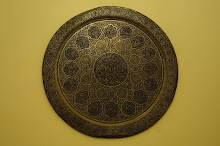
All text in this post copyright John Zada and John Bell 2008
Photo Courtesy of Studio Kerop, Cairo
Photo Courtesy of Studio Kerop, Cairo
In order to accommodate the influx of tourists coming to Egypt in the mid-19th century, including those passing through Cairo en route to India, some of the first large-scale hotels were built in the Egyptian capital at that time. In 1841, Samuel Shepheard became the co-manager of The British Hotel in Cairo, one of the first of those lodgings to be built. Four years later Shepheard bought The British Hotel and changed its name to Shepheard's. Located in the heart of the downtown quarter within close proximity to Cairo's best amenities and historical sites, the hotel gained a favourable reputation for good service and access to adventure that spread far and wide.
Referred to as “the caravanserai through which the world flows”, the Shepheard's became, at least for a time, one of the most luxurious and opulent hotels in the world. As the years passed however, and as the hotel moved into different buildings to accommodate the growing tourist flood, the Shepheard's would become an overcrowded terminus for colonialists, some of whom traveled to Egypt merely to imbibe the hotel's legendary atmosphere. In addition to being an expatriate hub and meeting place for the well-heeled, the hotel also served as the base for the King Tut excavations in Luxor, and for the British Army during World War One.
The Shepheard's longstanding associations with Britain's imperialist-colonialist agenda led to its eventual downfall. The hotel was burnt down by an angry mob during city-wide nationalist riots in January 1952. It's modern namesake, an imitation façade that stands today on Corniche al-Nil, miles from the original Ezbekiya location, was built soon after the fire, but retains little to nothing of the old hotel, save the name.













No comments:
Post a Comment